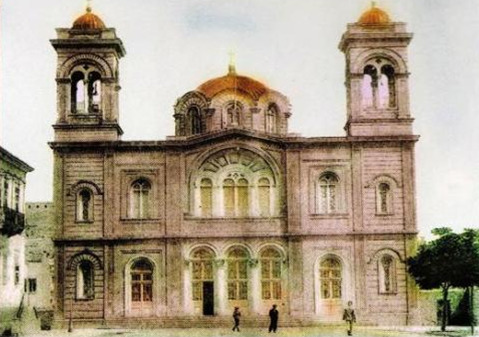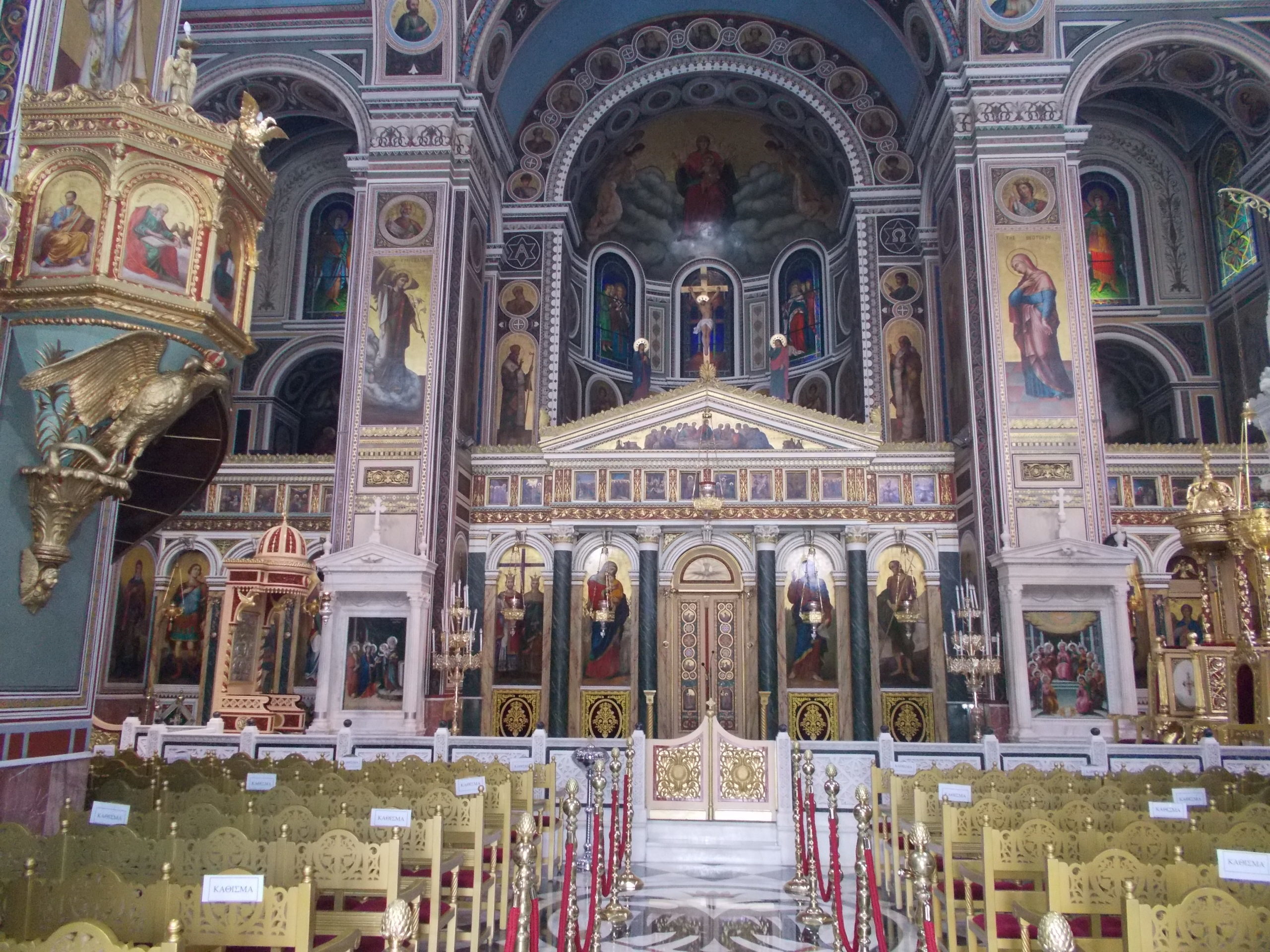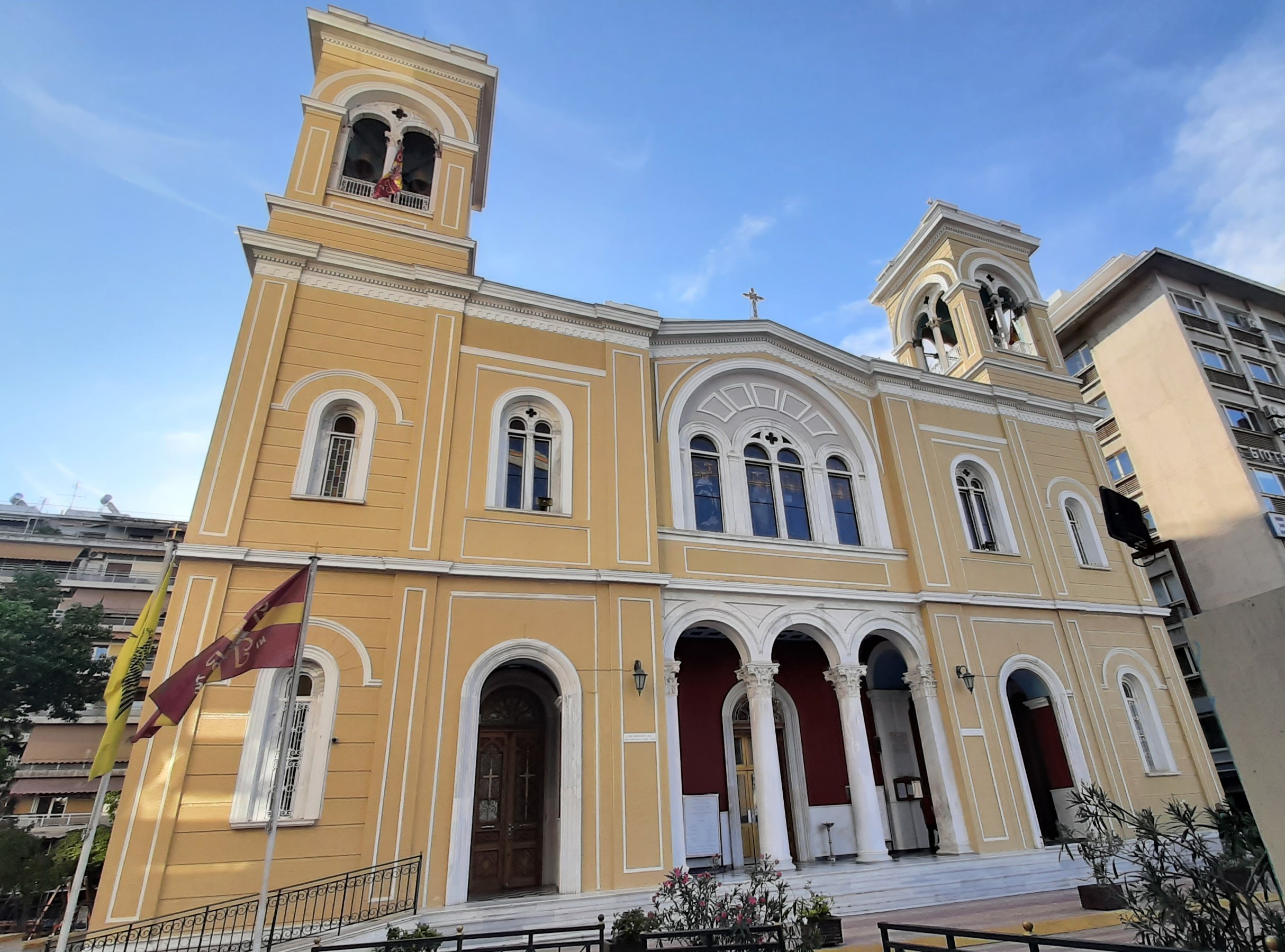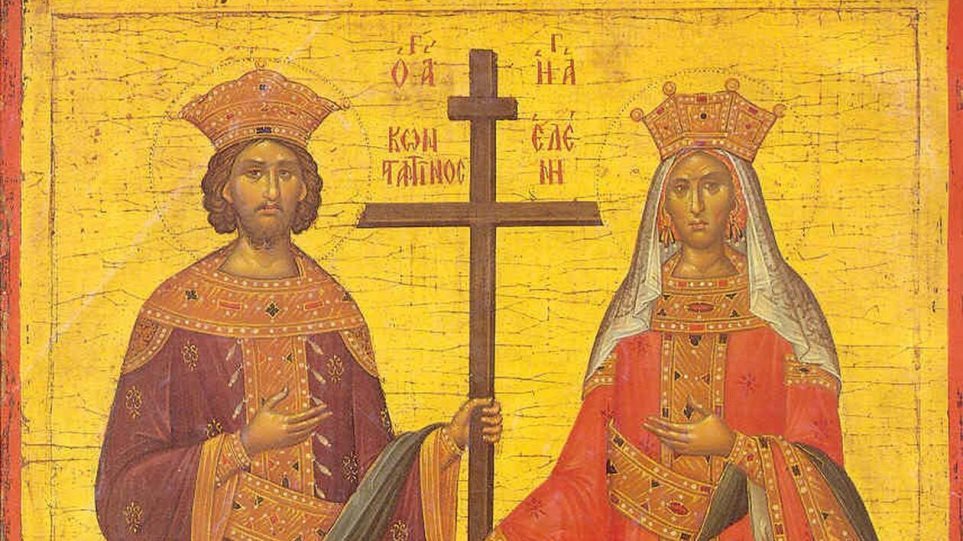
Ιερός Ναός των Αγίων Κωνσταντίνου και Ελένης Πειραιώς
Ο Ναός των Αγίων Κωνσταντίνου και Ελένης είναι ένας από τους μεγαλύτερους και ωραιότερους ναούς του Πειραιά, χωρητικότητας 1200 ατόμων. Το σχέδιο του με τα επιβλητικά κωδωνοστάσια και τον ψηλό τρούλο θυμίζει πολύ τον Μητροπολιτικό Ναό των Αθηνών. Ο Ιερός Ναός των Αγίων Κωνσταντίνου και Ελένης κατασκευάστηκε σε οικόπεδο του Χιώτη Ηλία Βάβουλα, εμπόρου της πόλης ,απο τον οποίο πήρε και το όνομα της η Γούβα του Βάβουλα. Η τοποθέτηση του θεμέλιου λίθου στο Ναό έγινε απο το Δήμαρχο Πειραιά Τρύφωνα Μουτζόπουλο στις 2 Ιουλίου 1878. Μεγάλο μέρος του Πειραιά καθώς και το οικόπεδο που χτίστηκε ο ναός είχαν δωθεί σε Χιώτες απο τα πρώτα χρόνια της πόλης, το 1835. Έτσι ηταν αναμενόμενο να δημιουργηθούν διαφορές μεταξύ Δήμου και των κληρονόμων της οικογενείας. Ο συμβιβασμός έγινε 5 χρόνια μετά ενω τα λαμπρά εγκαίνια του Ναού έγινε 9 χρόνια μετα τη τοποθέτηση του Θεμέλιου Λίθου,το 1887. Τα σχέδια του Ναού είναι του αρχιτέκτονα Ιωάννη Λαζαρίμου με μηχανικό τον Παναγιώτη Ζίζηλα. Μάλιστα η επιτυχία της κατασκευής του Ιερού Ναού απο τον αρχιτέκτονα, έδωσε τη δυνατότητα στον Ιωάννη Λαζάριμο να σχεδιάσει το Δημοτικό Θέατρο Πειραιά και τον Άγιο Νικόλαο. Ο ρυθμός του ναού είναι βυζαντινός της σταυροειδούς βασιλικής με τρούλο με ιδιαίτερες βέβαια νεοκλασικές γραμμές στο οικοδόμημα. Ο Ελληνας ζωγράφος Πολυχρόνης Λεμπέσης ήταν αυτός που πραγματοποίησε την εξαιρετική αγιογράφηση του ναού. Οπως μπορεί να δεί κανείς στο εσωτερικό του Ναού δεκάδες αφιερώματα κοσμούν πολλά μέρη του ναού και είναι αφιερώματα από τοπικούς συλλόγους και συντεχνίες του Πειραιά. Στην περίοδο της Μικρασιάτικης καταστροφής, ο Ιερός Ναός προσπάθησε να οργανώσει συσσίτια για τους περίπου 17.000 ( ίσως και παραπάνω ) πρόσφυγες που ήρθαν στον Πειραιά. Το Γυμνάσιο του Πειραιά λειτούργησε το 1934 στο Ναό το πρώτο νυχτερινό διδακτήριο. Ο Ιερός Ναός αποτελούσε με κάθε τρόπο το λατρευτικό κέντρο των Πειραιωτών πιστών, βοηθούσε στην καθημερινότητα, τόσο στην επιβίωση όσο και στη μόρφωση. Μετά τον βομβαρδισμό της πόλης το 1944 ο ναός έγινε δυο φορές καθεδρικός.

Πολλοί αξιόλογοι αγιογράφοι, μαρμαρογλύπτες και άλλοι καλλιτέχνες διακόσμησαν το εσωτερικό του Ναού. Η αγιογράφηση πραγματοποιήθηκε σταδιακά επί δημαρχίας Θεοδώρου Ρετσίνα (1887-1891), αλλά και αργότερα. Κατά καιρούς αγιογράφησαν οι: Δροσόπουλος, Κ. Πρινόπουλος, Β. Κόττας, Δ. Γεωργαντάς, Π. Λεμπέσης, Κ. Λιβαδάς, Κ. Αρτέμης και Π. Μπάτας. Ακολούθησαν και αυτοί την δυτικοευρωπαϊκή τεχνοτροπία, δίνοντας ένα νατουραλιστικό ύφος στα έργα τους. Ο σημαντικότερος αγιογράφος του Ναού ήταν ο Πολυχρόνης Λεμπέσης, ο οποίος είχε σπουδάσει στη Σχολή Καλών Τεχνών του Μονάχου και αναδείχθηκε σε έναν από τους αξιολογότερους Έλληνες ζωγράφους. Τα προσκυνητάρια καλλιτέχνησαν οι μαρμαρογλύπτες Νικόλαος Σπανός και Φίλλιπος Ρήγος.
Η Κρύπτη
Η κρύπτη είναι μαγνητική και περιέχει το logbook για την δήλωση για το geocaching.
Παρακαλώ να είστε προσεκτικοί κατά την αναζήτηση διότι το μέρος είναι πολυσύχναστο.

The Holy Church of Saints Constantine and Helen
The Church of Saints Constantine and Helen is one of the largest and most beautiful churches of Piraeus, with a capacity of 1200 people. Its design with the imposing bell towers and the high dome is very reminiscent of the Metropolitan Church of Athens. The Holy Temple of Saints Constantine and Helen was built on a plot of land by the Chiot Elias Vavoulas, a merchant of the city, from whom the Gouva of Vavoulas took its name. The laying of the foundation stone in the Temple was done by the Mayor of Piraeus Tryfonas Moutzopoulos on July 2, 1878. A large part of Piraeus as well as the plot where the temple was built were given to Chiots from the first years of the city, in 1835. Thus it was expected to be created disputes between the Municipality and the heirs of the family. The compromise was made 5 years later while the glorious inauguration of the Temple took place 9 years after the laying of the Foundation Stone, in 1887. The plans of the church are by the architect Ioannis Lazarimou with engineer Panagiotis Zizilas. In fact, the success of the construction of the Holy Temple by the architect, gave the opportunity to Ioannis Lazarimos to design the Municipal Theater of Piraeus and Agios Nikolaos. The rhythm of the church is Byzantine of the cruciform basilica with a dome with special neoclassical lines in the building. The Greek painter Polychronis Lembesis was the one who carried out the exceptional hagiography of the church. As you can see inside the temple, dozens of tributes from local associations and guilds of Piraeus adorn many parts of the church. During the period of the Asia Minor catastrophe, the Holy Temple tried to organize meals for the approximately 17,000 ( maybe more ) refugees who came to Piraeus. The High School of Piraeus operated in 1934 in the Temple the first night school. Worship center of the Piraeus' faithful people, helped in everyday life, both in survival and education. After the bombing of the city in 1944, the church became a cathedral twice.

Many remarkable hagiographers, marble sculptors and other artists decorated the interior of the temple. The hagiography was carried out gradually during the mayoralty of Theodoros Retsina (1887-1891) but also later. From time to time the painters were: Drossopoulos, K. Prinopoulos, V. Kottas, D. Georgantas, P. Lembesis, K. Livadas, K. Artemis and P. Batas. They also followed the Western European style, giving a naturalistic style to their works. The most important hagiographer of the Church was Polychronis Lembesis, who had studied at the School of Fine Arts in Munich and became one of the most remarkable Greek painters. The shrines were designed by the marble sculptors Nikolaos Spanos and Phillipos Rigos.
The Cache
The cache is magnetic and contains declaration sheet for the geocaching.
Please be very careful when searching for the cache because the area is full of muggles.
https://www.protothema.gr/greece/article/1008623/konstadinou-kai-elenis-poioi-einai-oi-isapostoloi-pou-giortazoun-simera/